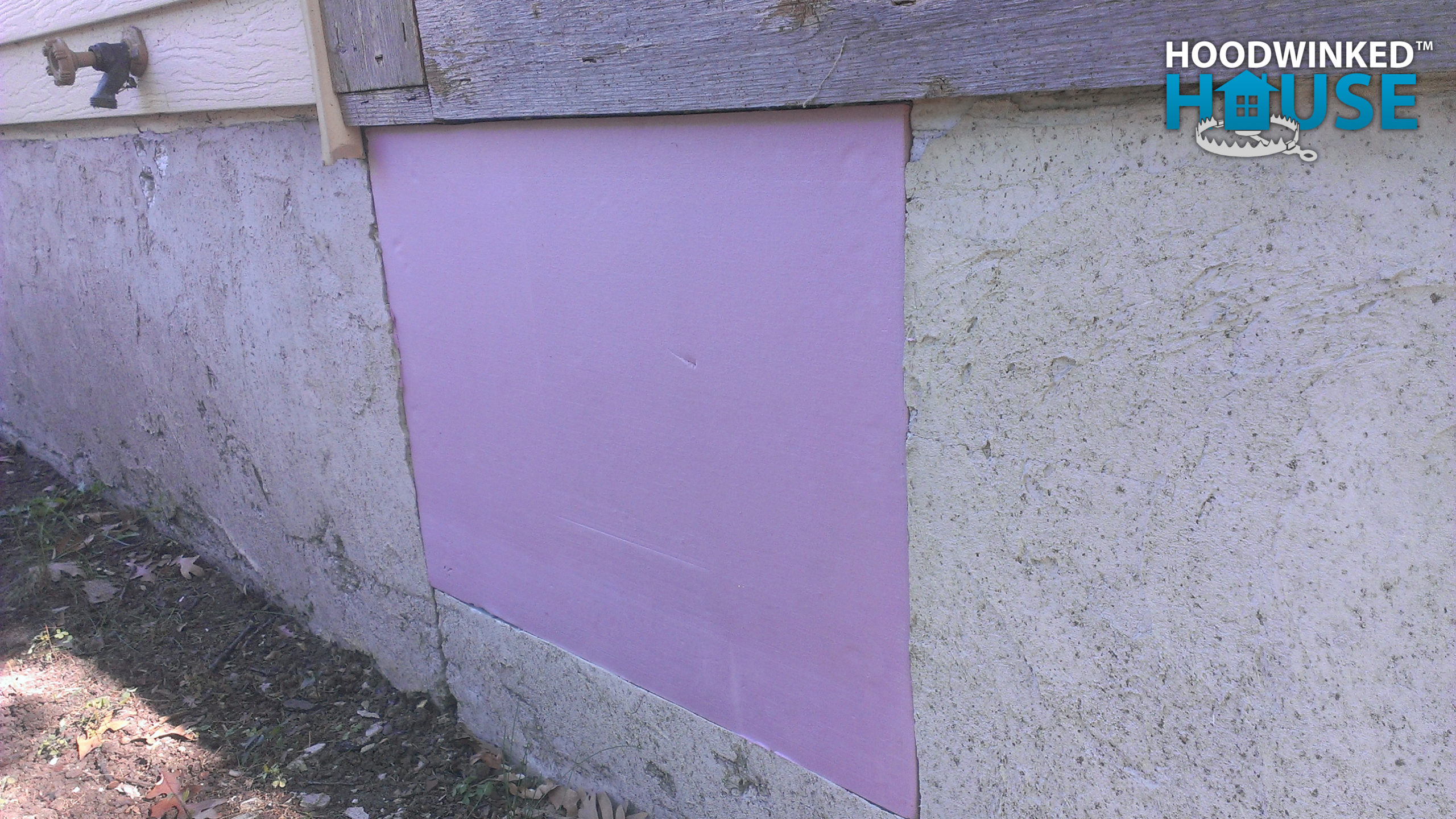I continue work on the attic rat runs. Despite the cooler weather, the attic is still sweltering hot when wearing long sleeves, a dust mask, and other protective gear.
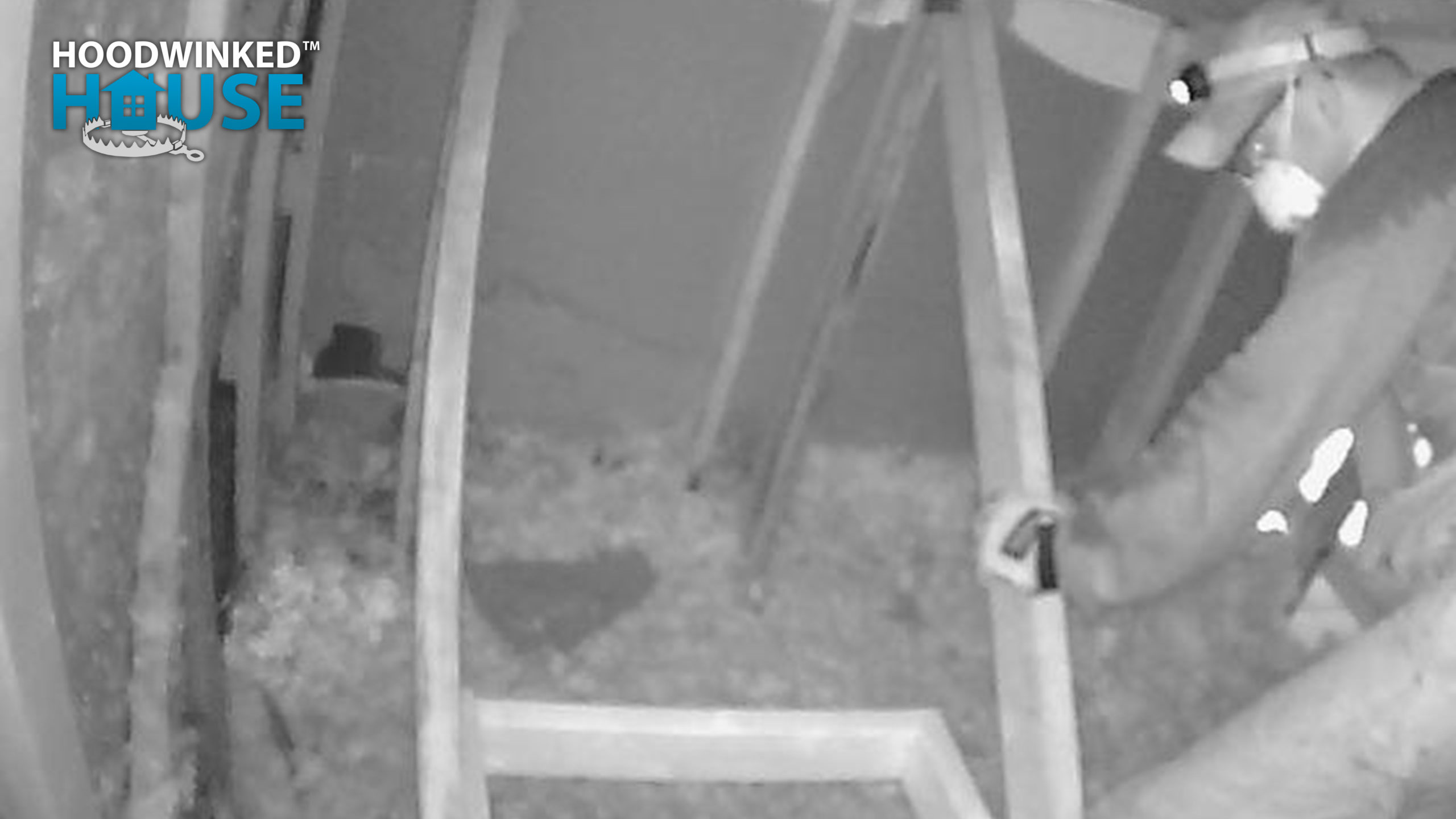
I continue work on the attic rat runs. Despite the cooler weather, the attic is still sweltering hot when wearing long sleeves, a dust mask, and other protective gear.

I contact the same roofer who repaired damage from the ice dams for advice on the shoddy sheathing. While the flipper’s work is certainly not done properly, the roofer is convinced that the new flashing, tarpaper, and ice shield have made the roof watertight. Recent rains have proved him correct, and the bedroom is staying dry.
My dad and I discover an external wall without insulation, leaking heat into the attic. It’s clear that this was one of the major contributors to the ice dams.
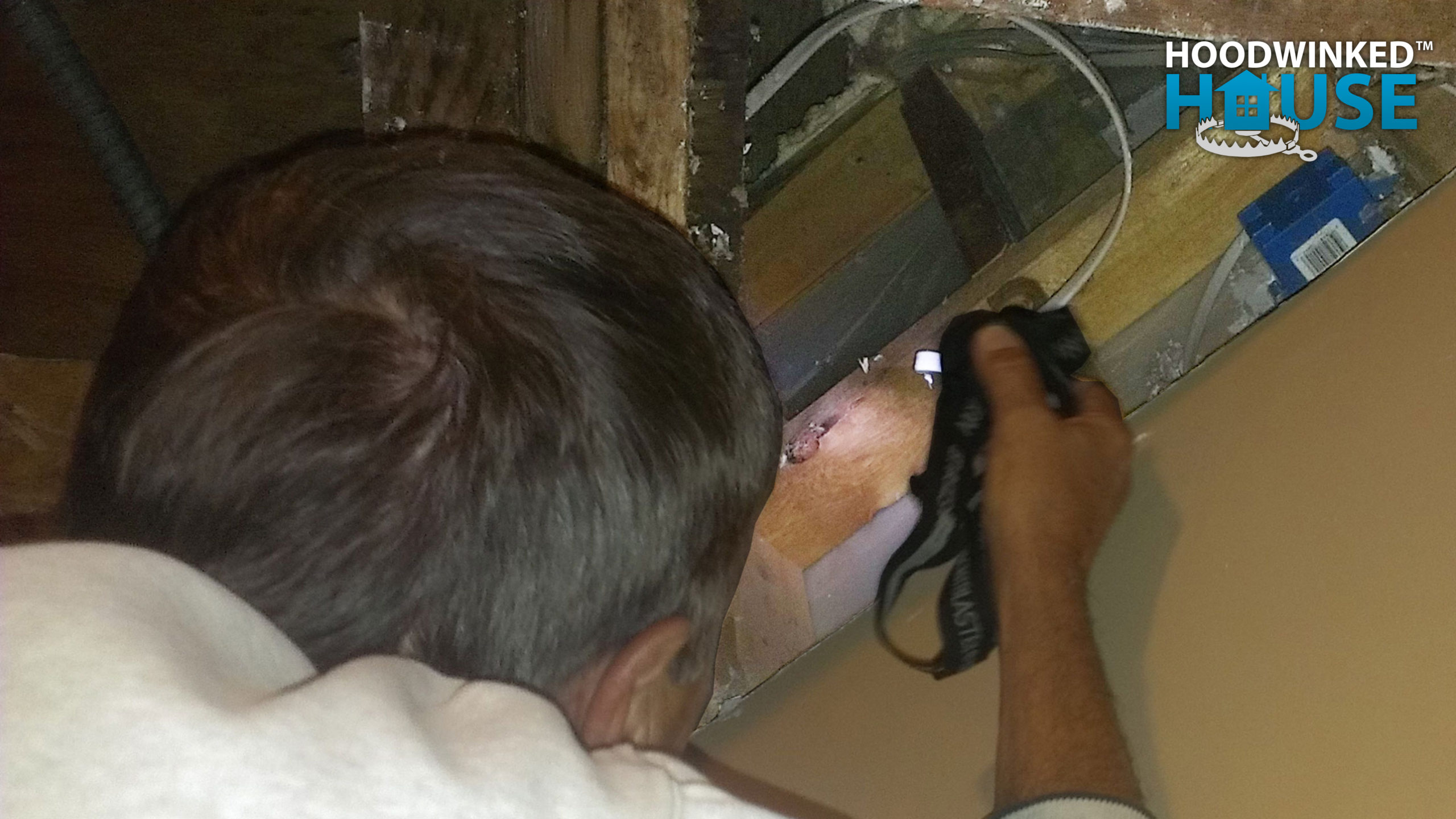
It’s clear that before I bought the house, there was a hole in the roof, probably caused by someone stepping on rotten sheathing. The flipper simply overlaid the damaged area with new tar paper and shingles without actually repairing anything.
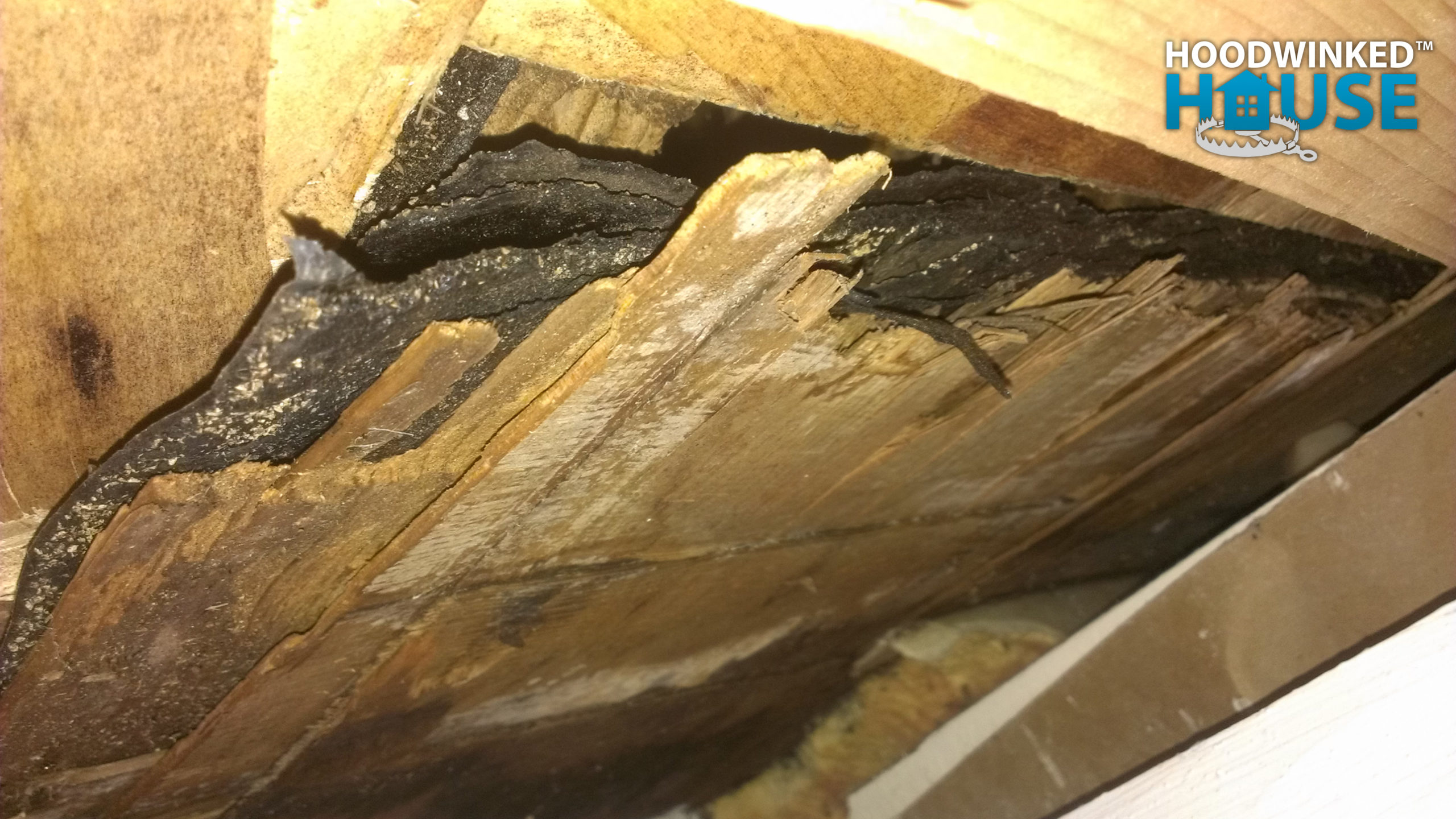
Their construction debris collected in the eves, piling more than 4″ deep, and blocking these vents.
I reinforce and patch the underside of the sheathing hole with some extra framing and plywood. Later, we replace the damaged attic ventilation chutes with new ones. I also clean and sand the dirty, mildewey trusses. Then, I paint them with a generous coat of mold-killing primer.
The vents are too small and sparse, not letting enough cold air into the attic. I cut some additional vent holes into the eves. Then, I install a long grille over the new vent holes.
These repairs restore cold airflow to the attic, keeping the roof cold.

Although this blog has been a fairly detailed record of the ordeal, we receive word from the Anoka County Investigator that the criminal investigation against the Seller is being dropped due to “insufficient facts”.
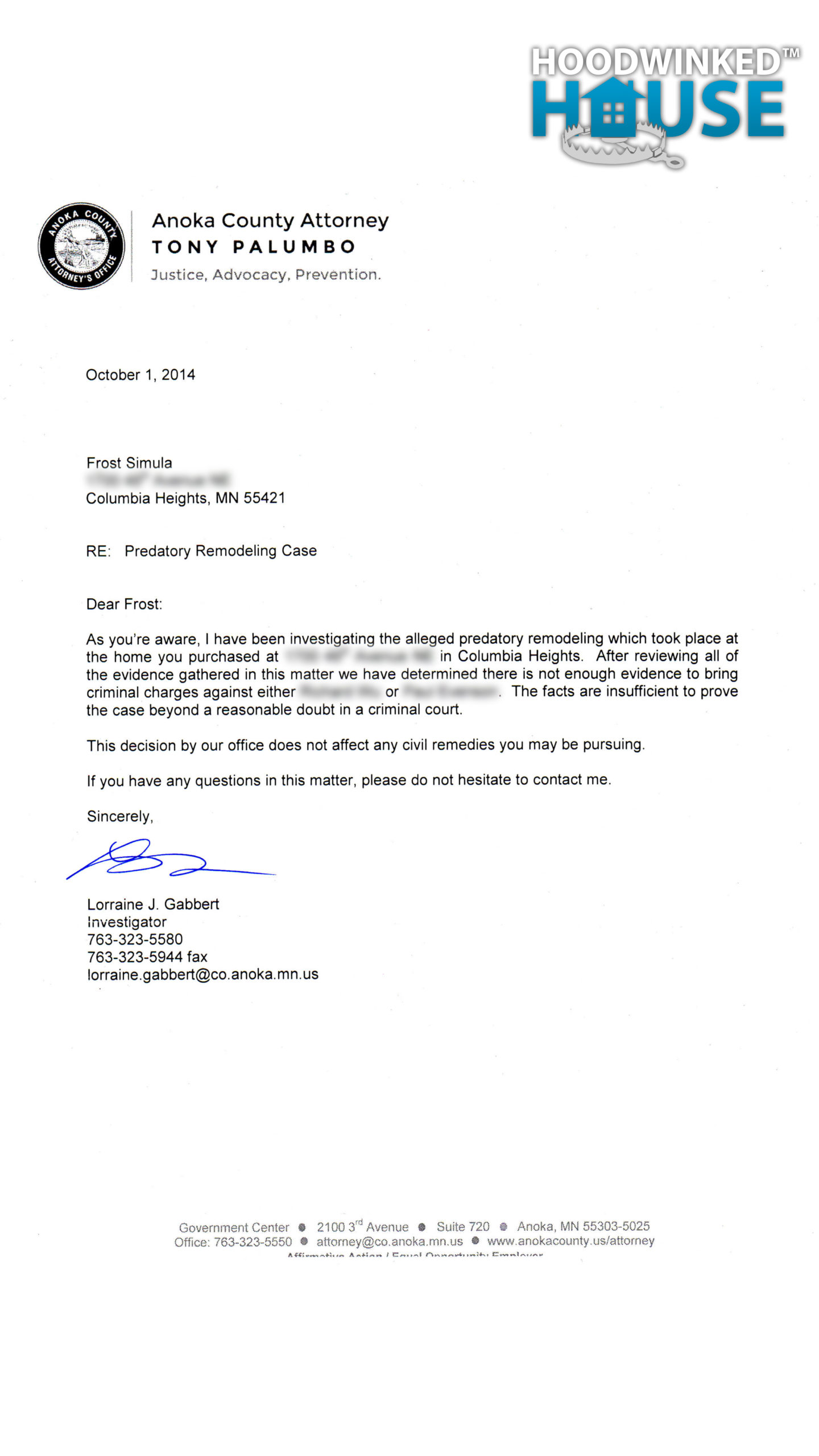
Meanwhile, I have more repairs to do. The sconce lights on the front of the house were on two different circuits, with switches in completely separate locations. This was probably left-over from the original house floorplan when the “attached” garage only shared a roof with the rest of the dwelling, but no longer makes sense with the dining room addition. I re-wired the sconce lights to be on a single circuit and switch.
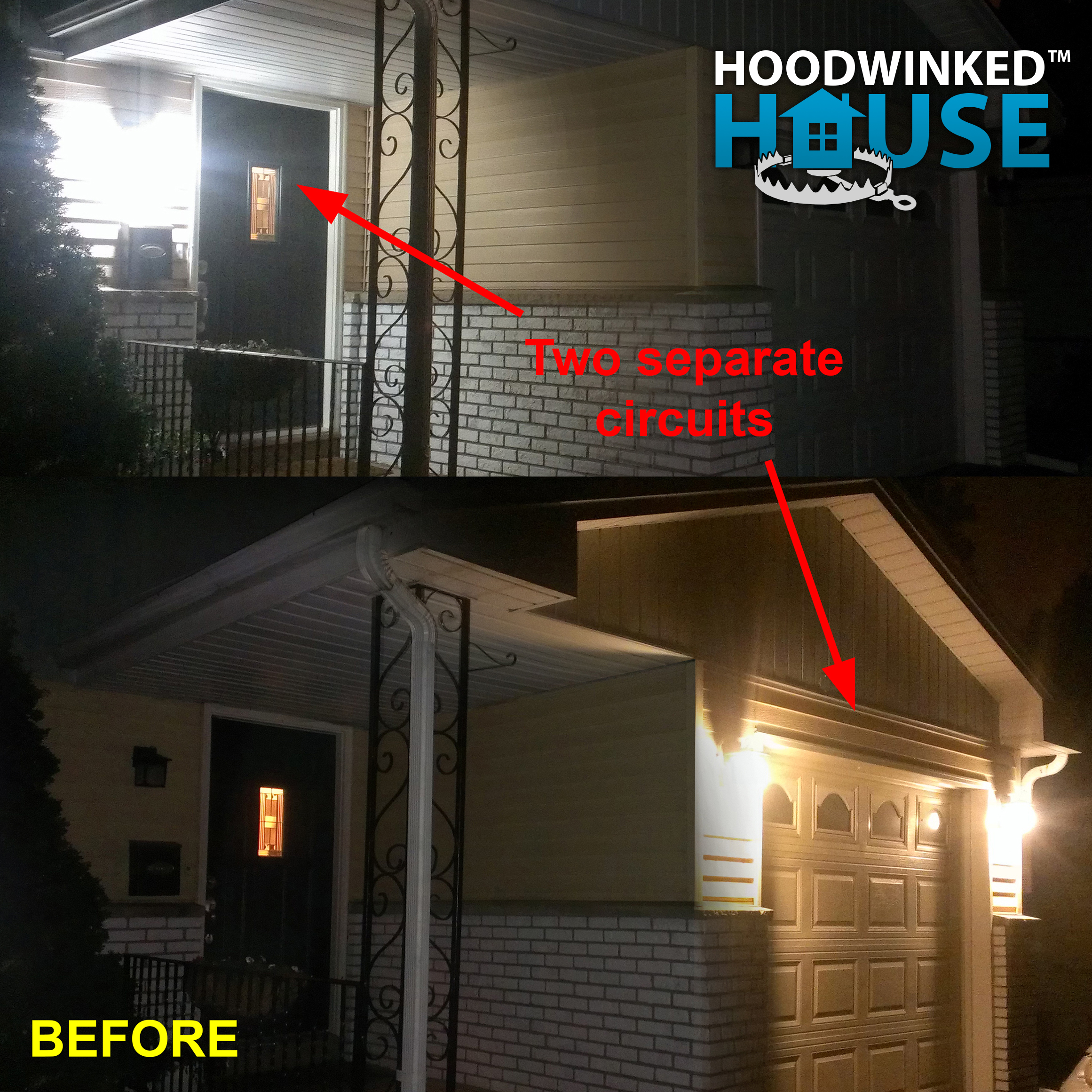
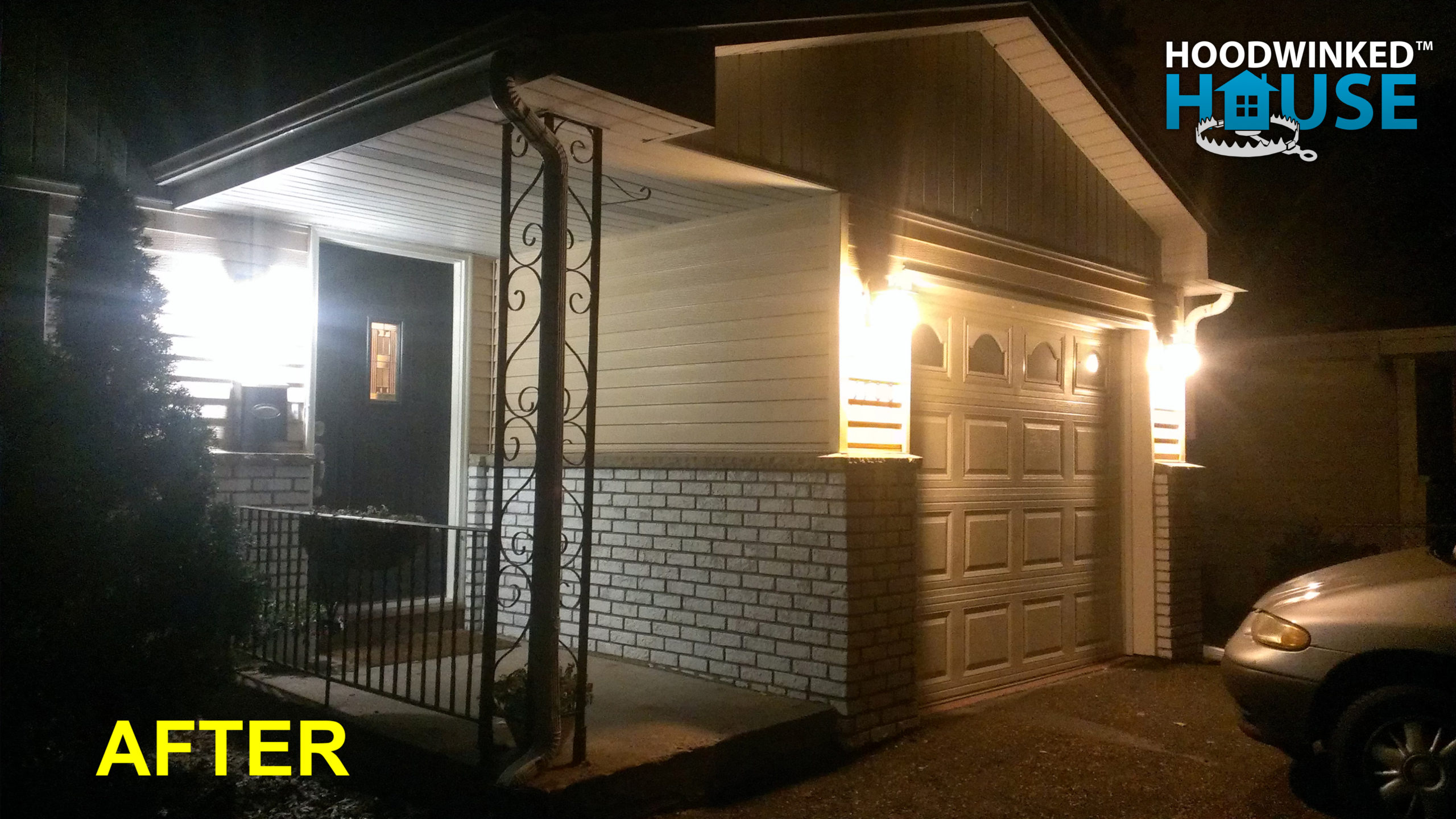
I wire up some basic power and lighting in the attic to make it a safer working environment. ($44.97)
The new lights revealed lots more old raccoon feces, buried in the insulation.
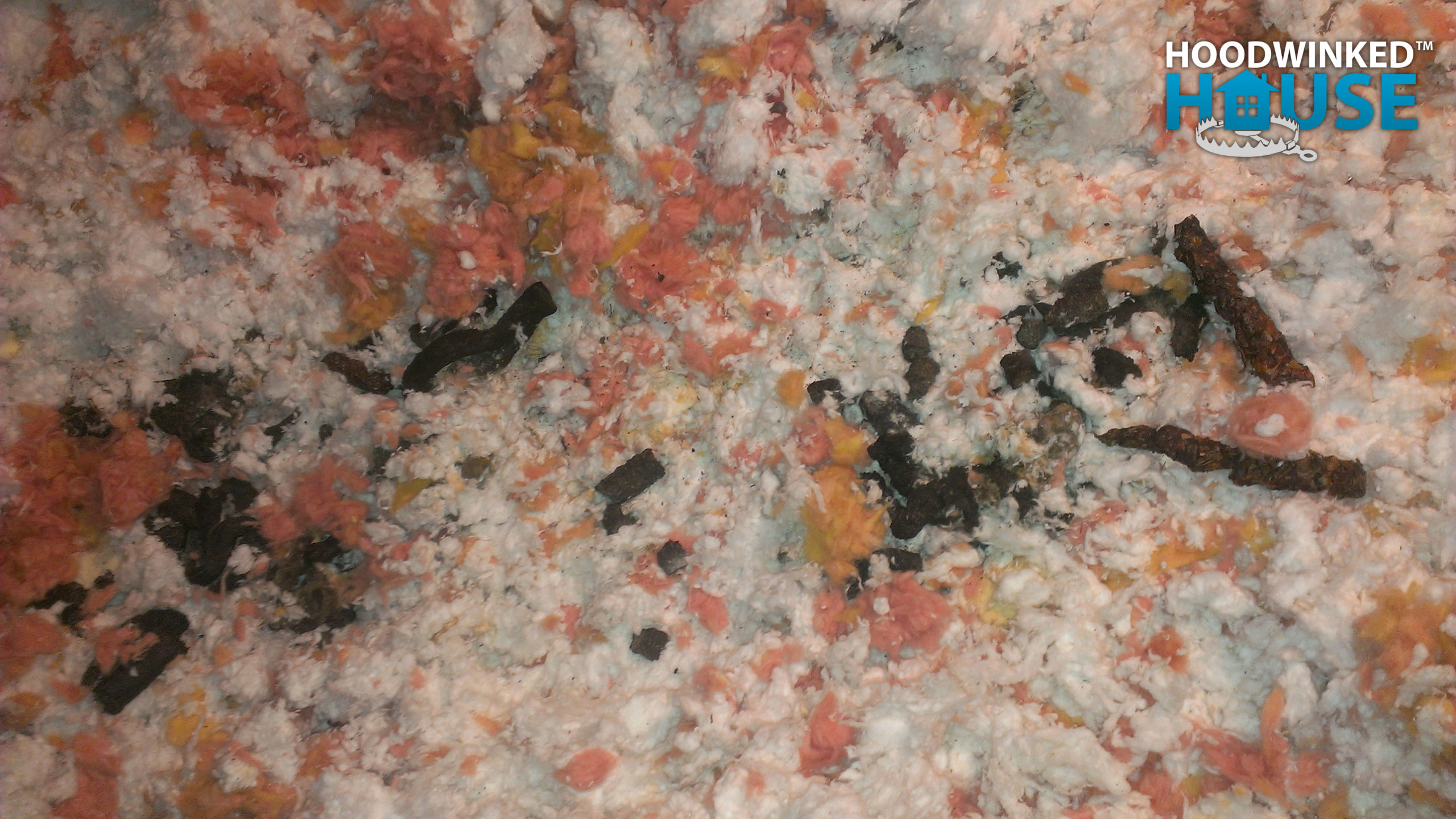
This is not new, and the pests are gone. However, it’s clear that they had been in the attic for quite some time, shuffling around insulation, walking the perimeter of the roofline and matting-down a path. After I finish cleaning up the wildlife mess, I’ll need to re-distribute the insulation, and blow in more to increase efficiency.
I replace the insulation I had removed on the exterior of the dining room foundation. ($17.99)
